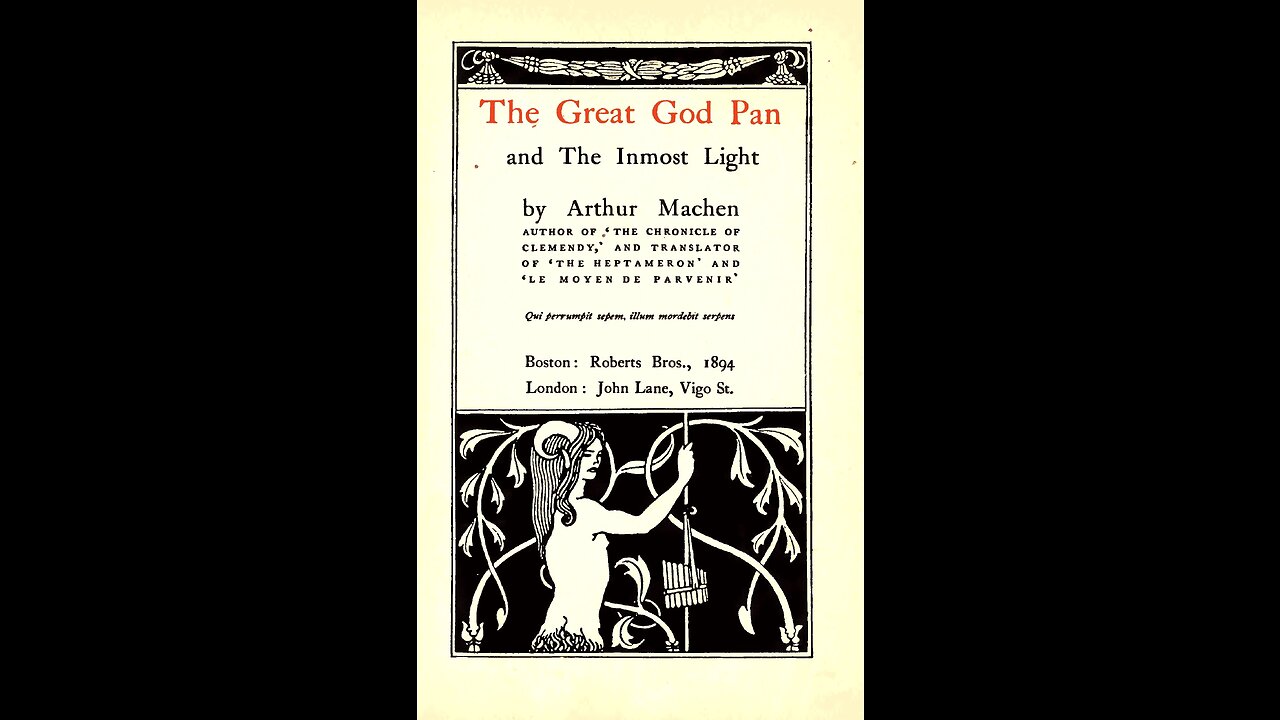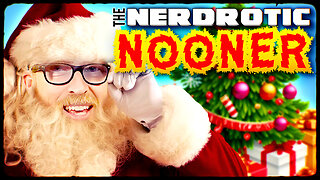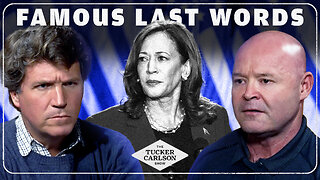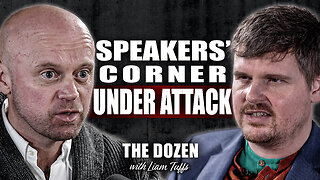Premium Only Content

"The Great God Pan" by Arthur Machen
0:00:00 The Experiment
0:19:16 Mr. Clarke's Memoirs
0:36:22 The City of Resurrections
0:54:05 The Discovery in Paul Street
1:07:52 The Letter of Advice
1:20:02 The Suicides
1:40:15 The Encounter in Soho
1:56:57 The Fragments
The book I am reading from has an occasional difference in word or phrase from what you will find in the link below. If you are following along with the link, I'm not reading it wrong, I'm reading a different edition that actually has uses different words here and there.
My edition contains a good deal of annotations. I won't reproduce all of them, but here are some of the more useful ones:
Chapter 1: "chase in Arras, dreams in a carrier" from 'Dotage', in "The Temple", by the Welsh-born clergyman and poet George Herbert"
Digby's theory and Browne Faber's discoveries" are fictitious"Oswald Crollius": Paracelsian introchemist (combination chemist and physician) known for his 'theory of signatures'
Chapter 2: homoeopathic: in a medical context, curing like with like. The principle of 'homoeopathic magic', by which 'like produces like', is discussed at length by James George Frazer in "The Golden Bough"
a place of some importance in the time of the Roman occupation: the village is near Machen's birthplace of Caerleon, barely disguised here as 'Caermaen'. The town was the site of the castra (legionnary fortress) of Isca Augusta, built around 75 AD. ... No doubt Machen also has in mind the nearby village of Caerwent, of which he wrote, years later: 'Caerwent, also a Roman city, was buried in the earth, and gave up now and again strange relics - fragments of the temple of "Nodens, god of the depths"'
charcoal burners: the production of charcoal from wood was a traditional occupation in Wales, dating back at least to Roman times
Et diabolus incarnatus est. Et homo factus est. "And the devil was made incarnate. And was made man"; a travesty of the Nicene Creed in which Christ 'By the power of the Holy Spirit ... became incarnate from the Virgin Mary, and was made man'
Chapter 3: the Treasury: the office of the Director of Public Prosecutions had been combined with that of the Treasury Solicitor in 1884
Chapter 4: model lodging-house: in response to the squalid and overcrowded conditions of many common lodging houses in the early Victorian era, Prince Albert spear-headed efforts to construct new tenements for the London poor
Chapter 6:
-bachelor's gown = university degree
-Zulu assegai = a type of spear
-the murders of Whitechapel is a reference to killings by Jack the Ripper
-the labyrinth of Daedalus = the maze of the Minotaur
-Carlton Club was founded in 1832 and is associated with the Conservative Party
Chapter 7: Queer Street: slang expression indicating a state of financial embarrassment; a metaphorical place. Here, presumably by extension, Villiers seems to be referring, less figuratively, to a particular seedy locale and its under-worldly denizens
cicerone: a learned guide, one 'who shows and explains the antiquities or curiosities of a place to strangers'
There is a post-script in the text that I didn't read into the recording: "NOTE. - Helen Vaughan was born on August 5th, 1865, at the Red House, Breconshire, and died on July 25th, 1888, in her house in a street off Piccadilly, called Ashley Street in the story."
The Latin in Chapter 5: "Silet per diem universus, nec sine horrore secretus est; lucet nocturnis ignibus, chorus Ægipanum undique personatur: audiuntur et cantus tibiarum, et tinnitus cymbalorum per oram maritimam."
The Latin in Chapter 8:
DEVOMNODENTi
FLAvIVSSENILISPOSSVit
PROPTERNVPtias
quaSVIDITSVBVMBra
The pictures used are:
Chapter 1: A scan of title page from the book "The great god Pan" (Roberts Bros, Boston, 1894) by Arthur Machen. Cover illustration by Aubrey Beardsley
Chapter 2: From a Roman sarcophagus, showing Bacchante playing the tambourine and turning towards Pan, from the 3rd century AD. Photograph by Rama (https://commons.wikimedia.org/wiki/User:Rama), Wikimedia Commons, Cc-by-sa-2.0-fr (Creative Commons Attribution-ShareAlike 2.0 France: https://creativecommons.org/licenses/by-sa/2.0/fr/deed.en)
Chapter 3: The Apollo Theatre on Shaftesbury Avenue. Also shows the corner of Rupert Street leading off into Soho. Photo by Tom Morris, used here under the Creative Commons Attribution-ShareAlike 3.0 Unported license (https://creativecommons.org/licenses/by-sa/3.0/deed.en)
Chapter 4: An early photo of Tottenham Court Road and Oxford Street
Chapter 5: Piccadilly Circus circa 1900
Chapter 6: London news boys circa 1900
Chapter 7: "Soho Vice" by konstantin, used here under the Creative Commons Attribution 2.0 Generic license (https://creativecommons.org/licenses/by/2.0/)
Chapter 8: Of the Caerwent Roman Temple, photo by andy dolman, used here under the Creative Commons Attribution-ShareAlike 2.0 Generic license (https://creativecommons.org/licenses/by-sa/2.0/deed.en)
To follow along: https://www.gutenberg.org/files/389/389-h/389-h.htm
-
 2:23:15
2:23:15
Nerdrotic
13 hours ago $12.44 earnedA Very Merry Christmas | FNT Square Up - Nerdrotic Nooner 453
110K11 -
 1:14:05
1:14:05
Tucker Carlson
13 hours ago“I’ll Win With or Without You,” Teamsters Union President Reveals Kamala Harris’s Famous Last Words
204K361 -
 1:58:31
1:58:31
The Dilley Show
13 hours ago $33.68 earnedTrump Conquering Western Hemisphere? w/Author Brenden Dilley 12/23/2024
154K40 -
 1:09:59
1:09:59
Geeks + Gamers
14 hours agoSonic 3 DESTROYS Mufasa And Disney, Naughty Dog Actress SLAMS Gamers Over Intergalactic
105K21 -
 51:59
51:59
The Dan Bongino Show
15 hours agoDemocrat Donor Admits The Scary Truth (Ep. 2393) - 12/23/2024
904K3.01K -
 2:32:15
2:32:15
Matt Kohrs
1 day agoRumble CEO Chris Pavlovski Talks $775M Tether Partnership || The MK Show
134K34 -
 28:23
28:23
Dave Portnoy
1 day agoDavey Day Trader Presented by Kraken - December 23, 2024
165K44 -
 59:29
59:29
BonginoReport
17 hours agoTrump, Murder Plots, and the Christmas Miracle: Evita + Jack Posobiec (Ep.110) - 12/23/2024
171K149 -
 2:59:14
2:59:14
Wendy Bell Radio
19 hours agoNothing To See Here
135K80 -
 2:12:18
2:12:18
TheDozenPodcast
1 day agoIslam vs Christianity: Bob of Speakers' Corner
117K33